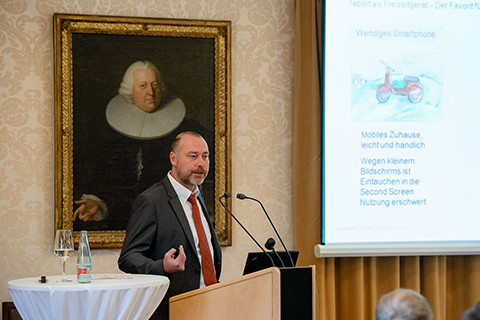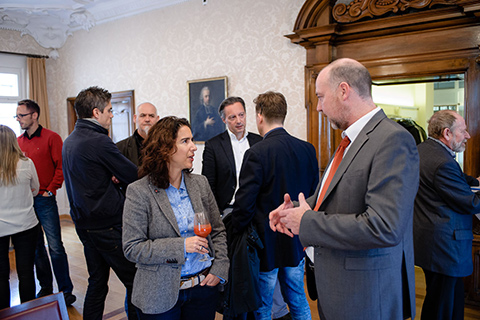IGEM: Insider lunches on the topic of Second Screen
Everyone is talking about the second screen. IGEM is exploring this topic in a series of insider lunches. At the first lunch, we learned what people are actually doing with the second screen and what the consequences are for television use.
Michael Schütz from the INNCH market research institute in Cologne has conducted a qualitative study on second-screen use to find out what people actually do on the small, second screen in front of the big screen. The study, commissioned by RTL, is based on 21 in-depth psychological, morphological interviews. Thanks to a special approach, in which the imagined images and effects are recorded in sketches in dialog with the interviewees, it is also possible to uncover unconscious mental effect factors.
The interviews yielded interesting findings, according to a press release. The second screens are used as an extended remote control, so to speak. When it comes to actual use, the smartphone is probably in the foreground, but a majority would rather use a tablet. The laptop, on the other hand, is rather unpopular because it is too reminiscent of the working world. If we examine the sketches on TV use, we see that water appears in ten out of 15 sketches. This stands for tranquility. The viewer lets himself float on it as if on a nutshell and - in contrast to Internet use - does not become active himself. If the two uses are combined with a second screen, the nutshell becomes a rowboat. The viewer thus takes the helm again and can also become part of the public (for example, via social networks). The result is a kind of private public viewing. The decisive factor is that the viewer can decide for himself when he wants to become active. This is, of course, especially the case when something is on the screen that does not specifically interest him. This can also be advertising. This leads to two important findings:
- The more boring the program, the higher the parallel use via a second screen.
- An effective TV commercial needs a soundtrack that works even without a picture. Because the viewer is distracted by looking at the second screen.
The interviews also revealed that the majority of people generally accept TV advertising. Commercial breaks are a small wake-up call. We move from a leanback state to a more upright, active state. In addition, they bring us back to reality, for example by reminding us that we still have to do the laundry.
For advertising, this further means that cross-screen advertising is especially popular when it is
- makes it possible to delve deeper into the product world by retrieving supplementary information
- creates more proximity to life via additional information such as models or sources of supply
- allows to become a contributing part of the public to help shape the program.
Finally, Schütz states that the viewer remains in the leanback state of TV use during second-screen use. However, he experiences it more self-effectively. Second screen use increases the involvement in first screen TV.










